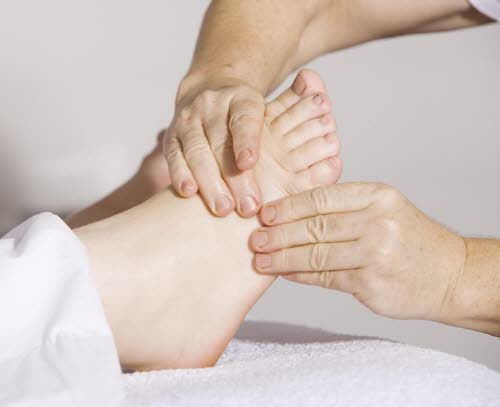Understanding Plantar Fasciitis: Causes and Symptoms
Plantar fasciitis is a painful condition that occurs due to inflammation in the plantar fascia, a thick band of tissue that runs along the bottom of the foot.
It is a common condition that affects around 10% of people at some point in their lives, with athletes and people who spend extended periods on their feet being more prone to develop the condition.
In this article, we will discuss the causes and symptoms of plantar fasciitis, as well as the treatment options that are available.
Causes of Plantar Fasciitis
Plantar fasciitis(p.f) is often caused by overuse of the foot, particularly during activities such as running, jumping, and dancing.
The condition may also occur as a result of a sudden increase in physical activity, inadequate footwear, or standing for prolonged periods on hard surfaces.
Additional factors that may increase the risk of developing plantar fasciitis include tight calf muscles, obesity, and anatomical abnormalities such as flat feet or high arches.
Symptoms of Plantar Fasciitis
The primary symptom of p.f is sharp pain in the heel or arch of the foot, particularly in the morning or after periods of inactivity.
The pain may also be felt after physical activity, especially if the intensity of the activity was high.
In some cases, the pain may be mild and go away on its own, but in others, it can be severe and debilitating, making it difficult to walk or stand for extended periods.
Treatment Options for Plantar Fasciitis
There are several treatment options available for p.f, depending on the severity of the condition.
Non-surgical treatments include rest, ice, compression, and elevation (also known as RICE therapy), as well as stretching and strengthening exercises for the foot and ankle.
Over-the-counter pain medications, such as ibuprofen and acetaminophen, can also help to alleviate pain and inflammation.
In more severe cases, a doctor or podiatrist may recommend custom orthotics, which are specially designed shoe inserts that help to support the foot and relieve pressure on the plantar fascia.
Night splints, which are devices that keep the foot stretched while sleeping, may also be recommended to alleviate the morning pain commonly associated with plantar fasciitis.
In rare cases, surgery may be necessary to relieve chronic p.f pain.
However, surgery is typically only recommended after other non-surgical treatments have been tried and have not been effective.
Prevention of Plantar Fasciitis
To prevent p.f, it is essential to practice good foot care habits. T
his includes wearing supportive shoes with good arch support and avoiding high heels and flip-flops.
Stretching and warming up before physical activity and gradually increasing the intensity of physical activity can also help to prevent the condition from developing.
Additionally, maintaining a healthy weight and avoiding long periods of standing on hard surfaces can also help to reduce the risk of developing p.f.
In conclusion, plantar fasciitis is a painful condition that affects many people at some point in their lives.
By understanding the causes and symptoms of the condition, as well as the treatment and prevention options that are available, individuals can take steps to alleviate pain and avoid further damage to the plantar fascia.
With proper care and treatment, most people with p.f can make a full recovery and return to their usual activities without experiencing any pain or discomfort.





